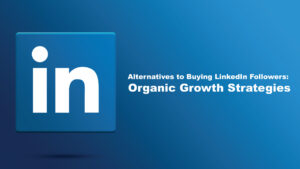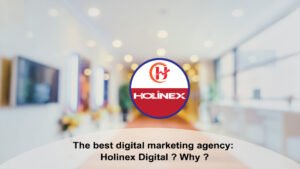Do you know the importance of effective visual communication? Explore proven strategies to create compelling visuals that resonate with your audience.? There’s something about the colors, the layout, and the font that grabs your attention and pulls you in. That’s the power of good graphic design. As a business owner, graphic design should be an essential tool in your marketing toolkit. It’s how you visually communicate with your customers and share your brand story.
Graphic design helps you connect with your audience on an emotional level through visuals. It makes your content more engaging and impactful. When done well, graphic design makes your brand memorable and helps you stand out from the competition. It’s what turns casual viewers into loyal customers and brand advocates.
In this article, we’ll explore why graphic design matters for your business and how to leverage it to strengthen your brand and better connect with your customers. You’ll learn principles of effective visual communication and examples of companies doing it right. Most importantly, you’ll discover how to work with graphic designers to develop a visual style that amplifies your brand message.
What Is Graphic Design?
Graphic design is all around us, from the apps we use to the packaging we buy. But what exactly is graphic design? In short, it’s visual communication. Graphic designers use images, colors, fonts, and layouts to convey messages and connect with audiences.
Graphic design plays an important role in business. It allows companies to promote their brand and products in a visually compelling way. Things like:
- Logos: A logo is a graphic mark or emblem used to represent a company or product. Logos are key to establishing brand identity and recognition.
- Print materials: This includes business cards, stationery, brochures, flyers, etc. These materials visually represent a brand and convey information to customers.
- Websites and mobile apps: Digital platforms are essential for most businesses today. Graphic designers help determine the visual style, layout, and user experience of websites, apps, and other digital products.
- Product packaging: The packaging is often the first impression a customer gets of a product. Graphic designers create eye-catching packaging that aligns with a brand’s image.
- Marketing campaigns: Graphic designers frequently contribute to the visual style of marketing campaigns on social media, TV, billboards, and more. Impactful visuals help to capture attention and drive the message home.
In short, graphic design is key to crafting a cohesive brand image and an engaging customer experience. For any business looking to visually connect with its audience, graphic design is invaluable. The next time you see an effective visual campaign or user-friendly app, you’ll know who to thank – the graphic designer!
Why Effective Visual Communication Matters for Businesses
As a business, your visual communication matters. Why? Because in today’s fast-paced, image-driven world, you only have a few seconds to grab someone’s attention and make an impression. Effective visuals are key.
First, visuals boost engagement and sharing. We’re visual creatures – our brains process images 60,000 times faster than text. Eye-catching graphics, photos, and videos will draw people in and make them want to engage with and share your content.
Visuals also strengthen your brand. Using a consistent visual style, color palette, and logo helps create brand recognition and builds trust in your company. People will start to associate certain fonts, colors, and layouts with your brand.
In addition, visuals improve comprehension and recall. We remember 80% of what we see and do, compared to only 20% of what we read. So combining striking visuals with text will help people understand and remember your key messages.
The bottom line? In today’s world, visual communication is essential for businesses. Putting in the effort to craft high-quality, cohesive visuals will allow you to stand out, create an emotional connection, build your brand, and ensure your content is engaging and memorable. Your audience will appreciate the visual elements, and your business will reap the benefits.
Key Principles of Graphic Design for Visual Communication
To effectively communicate your business visually, there are a few key principles of graphic design to keep in mind.
Alignment
Having a clean, organized layout is key. Align elements on the page in a logical, easy-to-follow manner. Group related pieces together and use the same kinds of alignments for similar types of content. For example, align all headers to the left, images to the center, and captions to the right. Consistency is key.
Contrast
Use contrasting colors, sizes, and styles to create visual interest and highlight important information. For example, make headings larger and bolder than body text. Place colorful images next to neutral backgrounds. Use complementary colors (opposites on the color wheel) to make elements stand out. Contrast helps guide the viewer’s attention to what’s most significant.
Repetition
Repeat visual elements, like colors, fonts, shapes, and spacing throughout your design to tie it all together with a cohesive look and feel. For example, use the same corporate font for all headings and subheadings. Repeat your brand colors in text, backgrounds, images, icons, and any other graphical elements. Subtle repetition breeds familiarity and helps strengthen brand recognition.
Balance
Aim for a balanced layout with equal visual weight on both sides of the page and between sections. For example, don’t place a large image on one side with only text on the other. Add additional smaller visuals to balance it out. Make sure sections with more text also have more white space. An unbalanced layout can seem messy, cluttered, and harder to navigate.
Hierarchy
Establish a clear visual hierarchy to indicate the level of importance for each element. The most prominent items should draw attention first. Use size, color, and contrast to differentiate levels of headings and prioritize information. Hierarchy gives the viewer clues about where to look first and guides them through the content in the intended order. An unclear hierarchy results in confusion.
Following these tried-and-true principles of graphic design will allow you to craft visually compelling content that effectively communicates your key messages to the audience. Your designs will become more cohesive, balanced, and strategically lead the viewer through the information you want to convey.
How Graphic Designers Optimize Visual Communication
Graphic designers are visual communicators who optimize the transmission of ideas and messages through the strategic use of images, colors, fonts, and layouts. ###How do graphic designers achieve effective visual communication?
- They understand the audience and purpose. Graphic designers consider who will view the design and why, then tailor the visuals accordingly. For a tech-savvy audience, a minimal modern style may be appropriate. For a general consumer audience, a friendly and inviting style is better.
- They establish a visual hierarchy. Graphic designers organize content in a way that leads the viewer through the information in the intended order. They make key points and calls to action prominently visible. They use size, color, and placement to indicate the level of importance.
- They choose visuals that reinforce the message. The images, icons, colors, and fonts selected by graphic designers directly relate to the overall message or brand identity. For an eco-friendly company, natural colors and leafy graphics would be fitting. For a luxury brand, metallic, calligraphy fonts and high quality product photos are suitable.
- They optimize readability and comprehension. Graphic designers format content in a way that is easy to read and understand quickly. They use an appropriate font size, line length, and line height. They incorporate whitespace and avoid clutter. They may use bulleted lists, numbered steps, diagrams, or graphics to simplify complex ideas.
- They establish consistency and cohesion. Graphic designers aim to create a cohesive experience across all platforms and touchpoints. They use the same or complementary color palettes, fonts, layouts, and stylistic treatments to build familiarity and strengthen brand recognition. Consistency fosters trust and credibility.
By applying these techniques, graphic designers can create visually compelling and highly effective designs that resonate with audiences and achieve the intended communication goals. Their role in translating ideas into powerful visual expressions is invaluable for businesses and brands.
Tips for Working With a Graphic Designer to Achieve Your Business Goals
Working with a graphic designer is key to achieving your business goals through effective visual communication. Here are some tips to keep in mind:
Provide Clear Direction
Explain your business objectives and target audience to the designer so they understand what you want to achieve. Be specific about the message or experience you want to convey. The more details you can provide upfront, the more aligned the end result will be with your vision.
Share Examples
Show the designer examples of styles, layouts, images, fonts, and more that you like. This helps them gain insight into your preferences and the overall look and feel you’re going for. At the same time, be open to their creative suggestions based on their expertise.
Give Feedback
Review the initial design concepts and provide constructive feedback. Explain what you like as well as what could be improved. Be polite but honest, and give the designer an opportunity to revise the work. It may take a few rounds of feedback and revisions to get it just right.
Trust Their Judgment
While you want to give clear direction and share your input, also trust that you hired a graphic designer for their skills and experience. Defer to them on technical aspects and design choices. They are the experts on how to most effectively communicate your message visually.
Stay Within Budget
Have a budget for the project in place from the start and clearly communicate budget constraints to the designer. Be willing to prioritize what’s most important if you need to cut costs. Going over budget can damage your relationship with the designer and may require making compromises to the final product.
Following these tips will help ensure a collaborative process with your graphic designer and achieve impactful visuals that meet your business goals. Effective communication and mutual understanding are key.
Conclusion
So there you have it. Graphic design plays a crucial role in communicating your business message and brand to the world. When done well, it elicits an emotional reaction and forms a connection with your audience. It gives your content visual appeal and helps convey complex ideas in a simple, esthetically-pleasing way. The next time you need to get a message across, don’t underestimate the power of visuals. Hire a talented graphic designer, give them the creative freedom to do what they do best, and watch as your message spreads like wildfire. Visual communication is the present and the future, so make sure your business is ahead of the curve.



































